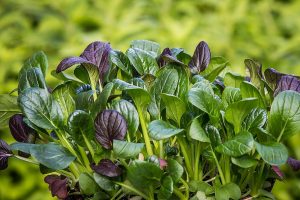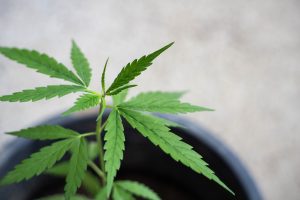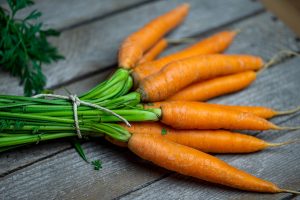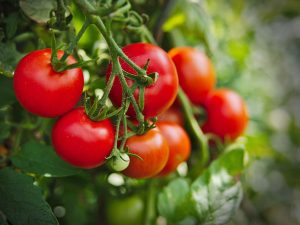
Corn, also known as maize, is a staple crop that has been cultivated for thousands of years. It is one of the most widely grown crops in the world, and an important source of food, feed, and fuel. Growing corn may seem like a daunting task, but with the right knowledge and tools, it can be an enjoyable and rewarding experience. In this blog post, we will be discussing how to grow corn – from selecting the right variety to planting and harvesting in simple and easy-to-follow steps. Whether you are an experienced gardener or just starting out, you’ll find valuable tips here to help you grow healthy and abundant corn in your own backyard. So let’s get started!
Choose the right time to plant corn seeds
When planning to grow corn, it’s essential to choose the right time to plant the seeds. According to factual data, corn is very sensitive to frost and requires a minimum soil temperature of 60F (16C), or 65F (18C) for super-sweet varieties. Therefore, it’s crucial to wait until the soil temperature is warm enough before planting the seeds. In addition to the optimal growing temperature, other factors need attention to ensure corn’s healthy growth. These include selecting a location with plenty of sunlight, ensuring consistently moist and well-drained soil, sowing seeds directly into the ground, and spacing them appropriately. To extend the harvest season, opt for early-maturing or staggered planting. For best results, always use fresh corn seeds and avoid transplanting the plants as they do not tolerate root disturbance well. By considering these factors and choosing the right time to plant corn seeds, gardeners can look forward to a healthy and bountiful harvest.
Select a location with plenty of sunlight for optimal growth
When it comes to growing corn, sunshine is key. That’s why selecting a location with plenty of sunlight is critical for the optimal growth of your corn stalks. The ideal planting site should receive at least 6 to 8 hours of direct sunlight each day. When you choose a sun-drenched spot, it will encourage maximum growth and yield for your sweet corn. Additionally, the soil should be rich and well-draining, so your corn plants can thrive. By choosing a spot with plenty of sunshine, you set your corn plants on the right path to success.
Ensure soil is well-drained and consistently moist
To ensure the growth of healthy and abundant corn plants, it is crucial to make sure that the soil is well-drained yet consistently moist. The best soil for corn is a fertile, loamy mixture with a pH between 6.0 and 6.5. It is recommended to work aged manure or compost into the soil before planting to provide essential nutrients. Watering is critical for corn growth, and the soil needs to be moist to a depth of 8-12 inches. If the soil is too dry, the seeds may struggle to germinate, and the plants could suffer from stunted growth or poor yields. By following these steps, gardeners can create the ideal growing conditions for their corn plants and reap the rewards of a bountiful harvest.
Moisten soil to a depth of 8-12 inches for best results
To ensure ample moisture for corn growth, it’s important to moisten the soil to a depth of 8-12 inches. This can be achieved by watering the soil slowly and deeply, making sure the water reaches the roots. Checking the soil’s moisture level with a trowel is an easy way to determine whether the soil is moist enough. This step is critical, as corn plants need consistent soil moisture to develop properly. Adding a 3-inch layer of mulch can help retain soil moisture, reducing the need for frequent watering. By following these guidelines and ensuring the soil remains moist, gardeners can optimize their corn crop’s growth and yield.
Sow seeds directly into the ground or transplant seedlings
Once the soil is ready, it’s time to sow the corn seeds. One option is to sow the seeds directly into the ground. This can be done by creating furrows in the soil about 1 to 2 inches deep and dropping the seeds into the furrows every 4 to 5 inches. It’s recommended to plant two or three seeds in each spot to ensure a good germination rate. Alternatively, if starting the seeds indoors, they should be sown in large enough cells to prevent becoming root-bound. When you transplant the seedlings outdoors, plant them about 8-12 inches apart. It’s essential to remember that corn does not transplant well, so it’s better to plant directly into the garden. Whether planting seeds directly or transplanting seedlings, keep the soil consistently moist for best results.
Opt for early-maturing or staggered planting for extended harvest
To extend the harvest of your corn, consider planting early-maturing or mid-season varieties, in addition to late-season varieties. By planting staggered crops, you can extend the harvest for several weeks. Another option is to make successive plantings every 2-3 weeks or every 10 days if using a fast-maturing variety. It’s important to choose a location with at least six to eight hours of sunlight per day and well-drained, fertile soil with a pH of 6.0-6.8. Ensure the soil is moist to a depth of 8-12 inches for best results. Plant seeds 1 inch deep and 8 inches apart in hills staggered 3 feet apart, sowing 8 seeds per hill and thinning to 4-6 plants. For optimal growth, it’s recommended to sow seeds directly into the ground rather than transplanting seedlings. By following these tips, you can enjoy a prolonged and bountiful corn harvest.
Use fresh corn seeds for best results
Using fresh corn seeds is crucial for getting the best results when planting corn. Older seeds may not germinate as well, which can result in a lower yield or patchy growth. When selecting seeds, make sure to choose ones that are plump, firm, and free of cracks or other damage. It’s best to purchase seeds from a reputable supplier to ensure that they are fresh and of high quality. By using fresh corn seeds, you can give your plants the best possible start and increase your chances of a successful harvest.
Plant seeds 1 inch deep and 8 inches apart
After selecting the right location for growing corn, it’s time to plant the seeds. Remember to plant the seeds at a depth of 1 inch and keep a distance of 8 inches between each seed. This distance ensures the corn plants have room to grow and spread out. Planting at the correct depth allows the seeds to establish themselves in the soil properly. Plus, planting at the right depth also helps to prevent them from drying out or being eaten by birds. Keep in mind that for hot weather plantings, you should sow the seeds deeper, around 3-4 inches. Following these planting tips will help you to grow healthy and productive corn plants in your garden.
Plant in hot weather at a depth of 3-4 inches
When planting corn in hot weather, it is important to adjust the seed depth accordingly. For optimal growth, plant corn seeds at a depth of 3-4 inches. This will ensure that the seeds have enough moisture to germinate and establish their roots. As mentioned before, it is crucial to select the right location with plenty of sunlight and well-drained soil. Adequate spacing between plants also plays a role in successful growth. Make sure to plant the seeds 8 inches apart to give each plant enough room to develop. While transplanting is not recommended for corn, you can still sow the seeds directly into the ground or use a large container for growing corn indoors. To enjoy fresh and sweet corn all season long, consider early-maturing or staggered planting for a continuous harvest. Using fresh corn seeds will also help ensure successful growth. By following these planting guidelines, gardeners can easily grow sweet corn even in the hottest of weather.
Corn does not transplant well, so plant directly in the garden
When it comes to growing corn, it is important to keep in mind that it does not transplant well. This means that it is best to sow corn seeds directly into the garden instead of starting them indoors and transplanting them later. This is because corn plants have shallow root systems, and they can be top-heavy. As a result, they need to be planted with great care to avoid damaging the roots. By planting directly in the garden, you can ensure that the corn plants establish themselves in the soil, which increases the chances of a healthy and bountiful harvest. So, make sure to choose a sunny location with well-drained, moist soil, and sow your corn seeds 1 inch deep and 8 inches apart for best results. With a little patience and care, you can enjoy fresh, delicious corn straight from your garden!






